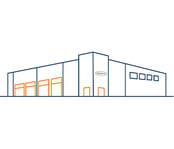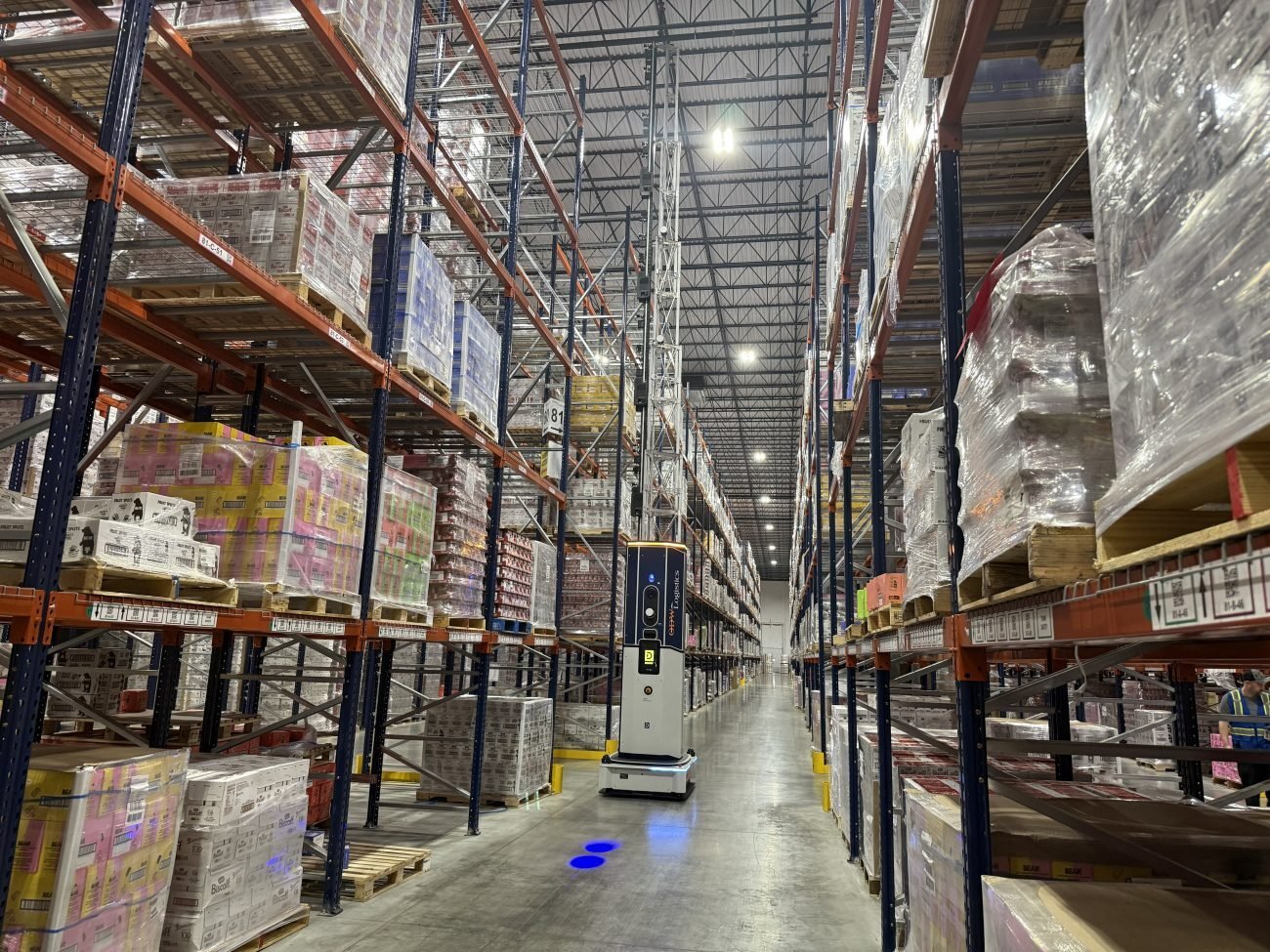Look around your warehouse. What words come to mind? Hopefully, words like efficiency, optimization, and productivity are on full display as your team works diligently and tirelessly to keep inventory moving.
If your warehouse is running smoothly, warehouse automation may be the next step to further streamline your operations with the latest and greatest technology. Automation can take your business to the next level.
If your operations could use some improvement, automation might be the answer—but not before you gain a clear understanding of what warehouse automation really means and envision how it will benefit your business.
What Is Warehouse Automation?
Warehouse automation boils down to using technology alongside or possibly even in place of manual labor to complete tasks. This might involve any combination of hardware, software, equipment, and, yes, robots. However, warehouse automation isn't necessarily a turnkey solution, but rather, a process of selecting and implementing the right technologies to achieve greater efficiency.
The world of warehouse automation is vast and dynamic, weaving through every aspect of warehouse management. Digital and system automation can make tasks less labor-intensive, while physical automation can maximize capacity and minimize labor. From basic automation that helps employees work faster to advanced artificial intelligence (AI) that frees them up to focus on other job duties, the possibilities are endless.
As consumers’ expectations for fast and cost-friendly shipping reach seemingly impossible heights, e-commerce companies are especially interested in warehouse automation to meet the need for speed—but any business can and should consider the options for automating its warehouse(s) in some form or fashion.
What Are the Benefits of Warehouse Automation?
Warehouse automation often requires a significant upfront investment of time, resources, and capital. That can be seen as a downside, but strategic technology investments have a major upside and can transform warehouse operations for the better. When leveraged and implemented correctly, warehouse automation can drive the following:
- Efficiency – If there's one overarching benefit to warehouse automation, it’s this one. Whether in terms of labor, speed, time, space, or any combination of the three, automation enables efficiency that simply cannot be achieved without substantial amounts of manual labor.
- Cost Savings – Efficiency goes hand in hand with cost-effectiveness. When it comes to warehouse automation, cost savings can stem from reduced labor and/or enhanced performance. While you shouldn't expect immediate cost savings due to the more substantial upfront costs for most automation, these savings can accelerate rapidly once the upfront investment is recouped. Most organizations see their initial costs repaid within three to five years, though you should work with your provider to determine expectations based on your particular goals.
- Accuracy – Human error has long been assumed and accepted as a cost of doing business, but with automation, that doesn’t need to be the case. Of course, technology does make mistakes, but those mistakes are fewer, farther between, and easier to identify and rectify in an automated system compared to employees making mistakes that are difficult to trace or reverse. Automation is often used for more accurate inventory counts and data.
- Customer Satisfaction – The benefits of warehouse automation are centered on improving a business for its own best interests. Those best interests revolve around keeping customers happy. By driving efficiency and accuracy, automation equips companies to provide faster and more reliable delivery times, with detailed tracking and a better ability to resolve issues swiftly.
- Employee Satisfaction – In a competitive workforce and fast-paced warehouse, employees expect their employers to give them the tools and training they need to be successful on the job. Beyond the basic workplace technology, automation shows that a company is keeping up with tech trends and investing not only in its business, but also in its employees, to better serve customers.
- Safety – Even if your company has a spotless safety record, every warehouse brings inherent safety risks. Automation can help keep your employees safe by reducing the physical labor required or removing them from certain tasks altogether. It can be as simple as sparing them some heavy lifting or as major as automating an entire process.
- Scalability – Automated processes scale up faster and with less friction than manual ones. An employee can only do so much, and a company can only hire and train additional employees so quickly. If your business is pursuing or entering a stage of exponential growth, automation will likely enter the discussion to scale order fulfillment.
Choosing and Implementing Automation Investments
From picking, packing, and shipping to returns, storage, and the many other facets of warehouse management, virtually every single task taking place in your warehouse right now presents an opportunity for automation. That’s exciting, but it can also be overwhelming, and you don’t want to make decisions without considering how they may impact your operations as a whole.
So, where do you start the conversation about automation? Ask yourself and your team questions like:
- What are the biggest challenges in our warehouse(s)?
- What areas of our warehouse(s) require the most manual and physical labor?
- Are there any holes in how we manage and track inventory?
- When was the last time we upgraded our technology?
- What new solutions have come to market since we last upgraded our technology?
- Are there common complaints that we receive from customers?
- Do we foresee an increase in demand?
- How can warehouse automation support our efforts toward our greater business goals and benchmarks?
From there, you can begin to zero in on specific technologies. If your warehouse doesn't currently operate on a modern warehouse management system (WMS), that might be the first step to setting the foundation for a technology-enabled warehouse. With any investment that you select, you can expect the implementation process to be relatively complex and possibly rather long. Getting key stakeholder buy-in early on and determining who will oversee and be involved in the rollout internally can help ensure the implementation stays on schedule and moves forward as efficiently as possible.
This strategic phase is essential to delivering an effective automated warehouse. Determining the goals, tradeoffs, opportunities, economic realities, and an effective plan to meet all those priorities may not be in your wheelhouse. That’s why working with a trusted 3PL experienced in warehouse automation can help ensure your automation plan. Reach out to our experts to learn more about how we can support your warehouse automation goals.
Common Misconceptions
For everything that warehouse automation is—innovative, efficient, scalable, and transformative—it's equally important to understand what it isn't. There are many misconceptions that either keep businesses from exploring automation or lead them down the wrong path when making technology decisions and automation investments. Implementing automation without accurately assessing its intended purpose and capabilities can have negative effects on a business and fall short of expectations. Let’s dispel a few of the myths about warehouse automation:
- Simply Software – Many warehouse automation projects involve software such as a WMS, and there's a software program for just about every detailed function of a warehouse. That said, software represents only one aspect of automation (be it a large one), and it's not a one-size-fits-all solution. Automation also encompasses equipment, machinery, and hardware to work in harmony with the software.
- A Silver Bullet – Automation isn't a magic cure for a flawed or failing process. It can help address and solve challenges, but it won’t fix broken systems, and certainly not overnight. Implementing warehouse automation takes a great deal of strategy, research, and consideration, making it a long-haul investment to improve any given area(s) of operations and, in turn, deliver the benefits above such as efficiency and cost savings.
Warehouse automation is just one aspect of streamlining your warehouse configuration. In the linked article, this excerpt says it all:
“Keep in mind that automation is a powerful accelerator, both of effective and ineffective processes. Automating a process that isn't optimized can quickly eat away at profits. Automation can also require a long time to realize ROI expectations, which need to be considered in the plan to avoid additional short-term costs.”
- Replacing People – Will robots completely replace workers in warehouses, wiping out jobs and leaving warehouses to function autonomously? It may be conceivable and perhaps even possible, but it's unlikely. The sci-fi scenario is one of the biggest myths surrounding AI and automation. While robots have shown the ability to complete certain job functions on their own and some roles can give way to AI, warehouse automation technology is designed to assist employees by making them productive, focused, efficient, and empowered at work. Robotics will not cause a mass unemployment event.
- For Enterprise Only – The costs of warehouse automation lead many small-to-midsized (SMB) business owners to believe that the latest technology is out of their reach budget-wise. If an SMB owner is looking to automate their entire warehouse, that may be somewhat unrealistic, but smaller automation projects can be attainable for SMBs, and the returns on those smaller investments can help fund additional automation projects over time. Automation isn't just for big companies or booming startups.
- Perpetual Replacement – Technology has a way of replacing itself, sometimes rather quickly, as we see with smartphones and other consumer electronics. Warehouse automation isn't in that same consumer realm, and business technology tends to evolve over years and decades rather than months or quarters as we see with consumer gadgets. Warehouse automation decisions and investments are made with the big picture in mind. Rest assured that if you go forward with an automation project, it will not become outdated any time soon.
If there's one point to take away from this guide, let it be that warehouse automation is more of a journey than it is a destination. New technologies will always be emerging, and humans will always be needed to work alongside automated solutions.
Examples of Warehouse Automation in Action
Now that you've read about warehouse automation, it’s time to see the possibilities put to work. As a third-party logistics provider (3PL) specializing in supply chain design and several industries where automation is accelerating, ODW Logistics keeps up on the latest technology to identify and implement game-changing automation projects for customers and at our own facilities. Take a look:
- ODW’s Own Automated E-Commerce Fulfillment Center – ODW’s 200,000-square-foot technology center in Columbus, Ohio, uses various automated solutions to serve multiple e-commerce customers and shippers. The building operates on a Tier1 WMS and showcases exciting technologies, including automated logistics management equipment for product handling and pallet management, as well as a robotic A-frame with conveying and related systems that process up to 3,000 orders per hour. The automated equipment helps address the declining pool of warehouse workers, a reality long before but exacerbated during the pandemic. Watch.
- Meet Chuck – At one of our Columbus, Ohio, distribution centers, nine autonomous mobile robots navigate the aisles helping our employees fulfill orders more efficiently. These robots, all named, “Chuck,” minimize walking for employees (amounting to a surprising one mile per day, per employee) by grouping orders based on aisles and zones. And remember, they’re not replacing all the employees, but working alongside them as AI colleagues. While a container is fully loaded by an employee, a Chuck robot is waiting nearby to complete the task. Watch.
- Automated Wine Fulfillment Operations – With the help of ODW, wine importer and distributor Lionstone International has been able to highly automate many of its warehouse functions and open full-time positions in other less laborious departments. Robotics auto-construct box sizes, place bottle dividers, and insert marketing materials. Voice-picking helps keep employers safer with hands-free cluster picking and improves their accuracy in barcode scanning. Box branding is also automated to support multiple carton sizes, while an automated storage tower releases orders based on assigned ship date and destination. A robotic palletizer interlocks cases in a configuration that improves pallet stability and keeps labels facing out for easy scanning. Watch.
Defining and Measuring ROI
The goal of any warehouse automation project is ultimately to see a return on investment. During the planning phases, you can calculate the projected ROI based on the expected cost savings over a specific period. A 3PL partner like ODW can help make ROI more definable and achievable.
For example, our investment in nine “Chuck” robots reduced training time from three hours to 30 minutes and also reduced order turn time by five hours. Single shift capacity increased by 65 percent. When we run these results against the labor saved, we have our ROI. In the case of a leading wine distributor, we delivered 50 percent full-time equivalent (FTE) savings and a 115 percent increase in hourly throughput.
Ready to reimagine your supply chain? Engage us from the start for supply chain design, including engineered warehouse solutions and automation design. Our personalized approach demystifies warehouse automation and gets to the solutions that will truly make a difference for your business. Learn more.
ODW Logistics
Since 1971, we’ve been providing warehousing, distribution, and transportation solutions for hundreds of brands. We operate as an extension of your business to control costs throughout your supply chain that deliver you a competitive advantage over your competition.RECENT POSTS
Introduction: The Evolving Landscape of E-commerce Fulfillment In the fast-paced world of online retail, customer expect...
Dec. 18, 2025 09:26 AM
ODW Logistics has been named a Top 50 Third-Party Logistics (3PL) Provider by Global Trade magazine and recognized in th...
Dec. 17, 2025 09:33 AM
December 3, 2025
Dec. 04, 2025 09:10 AM









.jpg)

